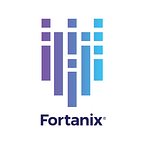What You Need to Know About Data Security in Quantum Computing
The Post-Quantum Revolution
Our current digital landscape heavily relies on classical computers, with binary bits processing information as 0s and 1s. Quantum computers, however, introduce a paradigm shift. These machines leverage quantum bits or qubits, which exist in multiple states simultaneously, thanks to superposition and entanglement.
In 2019, Google claimed “quantum supremacy” by successfully applying a 54-qubit quantum processor to solve a problem in 200 seconds that would take classical supercomputers an estimated 10,000 years. This monumental leap began a new era, with quantum computers demonstrating their process.
This intrinsic parallelism promises computational capabilities to outpace even the most advanced current supercomputers.
While quantum computing can successfully solve complex problems, it also threatens the foundation of data security as we know it.
How Fortanix Helps Data Security in the Post-Quantum Era
Introducing “Preparing for Post-Quantum Cryptography: Mapping your Organization’s Data Security Strategy to the Effects of Quantum Computing” a whitepaper by Dr. Richard Searle, Vice President of Confidential Computing at Fortanix.
The whitepaper explains post-quantum algorithms that can crack encryption methods that have protected our data for decades, like the RSA algorithm and Elliptic Curve Cryptography.
It mentions the potential threats quantum computing poses and provides a strategic roadmap for organizations to route this transition effectively.
How to Prepare Yourself for Post-quantum Era
The following three steps outlined in the paper are designed to help businesses prepare for the post-quantum era:
- Undertake Discovery:
Understanding Existing Cryptographic Security Posture: Organizations are advised to review their current data security infrastructure comprehensively. Identify the systems, applications, and processes and how they map to existing cryptographic keys.
Vulnerability Assessment: Once the cryptographic posture is identified, assess your vulnerabilities and gaps in security policies. Understand potential weaknesses in cryptographic algorithms, protocols, and key management practices.
Risk Prioritization: After identifying vulnerabilities, prioritize which encryption keys and data services pose the highest risk of data exposure. This helps determine which data and systems need immediate attention and protection.
Transition Planning: Develop a strategic plan that includes selecting suitable post-quantum algorithms, understanding their implementation requirements, and creating a timeline for the migration.
2. Control of Encryption:
Access Controls: Implement strong access controls for key management. Restrict access to cryptographic keys and operations only to authorized individuals or systems. Tight control over encryption keys maintains the confidentiality and integrity of sensitive data.
Transition: Update cryptographic protocols and algorithms without disrupting regular business operations. The goal is to integrate the new security measures while minimizing any operational disruptions in the organization.
Visibility and Control: Implement monitoring mechanisms to track and analyze cryptographic activities, ensuring that security policies are consistently enforced.
3. Build “Crypto-Agility” into Your Operations:
Crypto-Agility: Crypto-agility refers to the ability to quickly and efficiently adapt to new cryptographic standards and technologies. Adopt a unified data security platform to achieve crypto-agility by easily integrating and operationalizing new cryptographic standards.
Implementing New Standards: Actively implement and operationalize new post-quantum cryptographic standards as they become available. Stay informed about emerging cryptographic technologies and proactively adapt security measures to address evolving threats.
Conclusion
Fortanix leads the way in data-centric security and data exposure management. The Fortanix Data Security Manager (DSM) platform offers a data-centric security solution that helps organizations smoothly transition into the post-quantum cryptography era. With Fortanix, you can easily adopt new cryptographic algorithms, protect your sensitive data, and retain full control over encryption operations, all while staying compliant with changing data protection standards.
